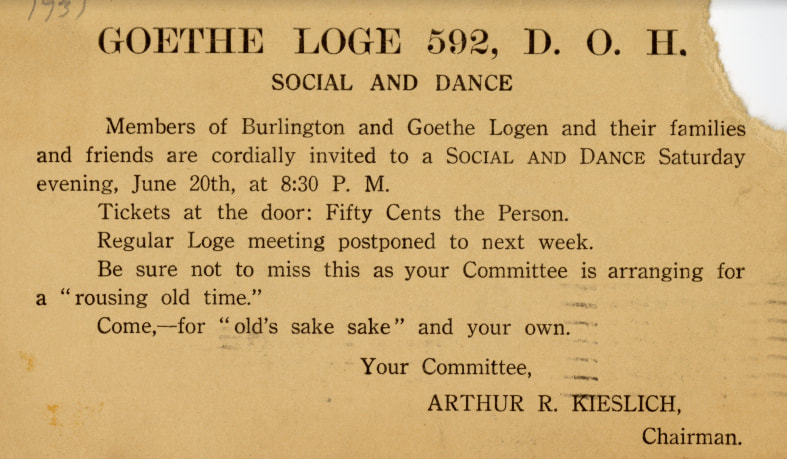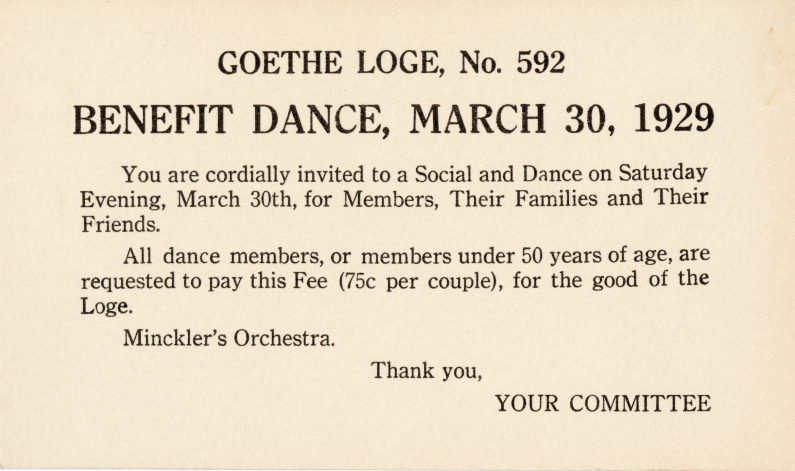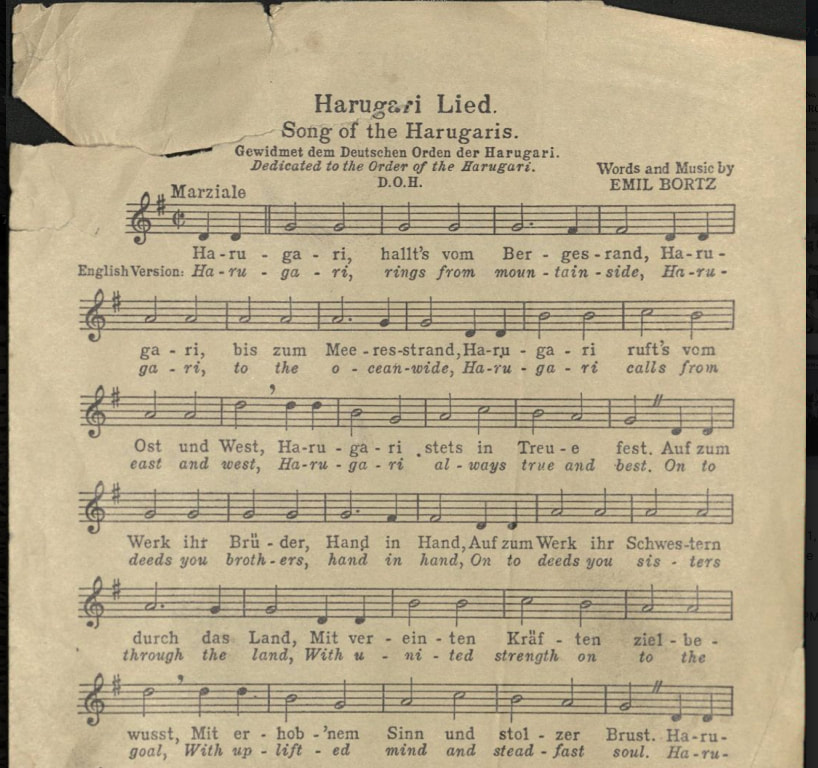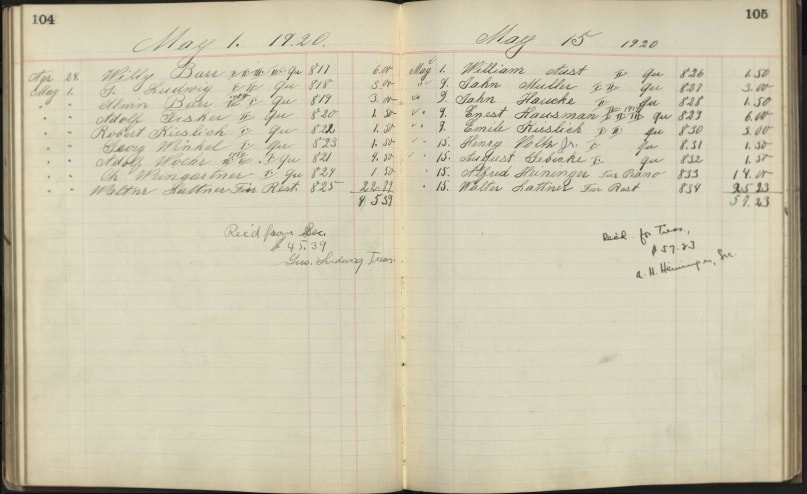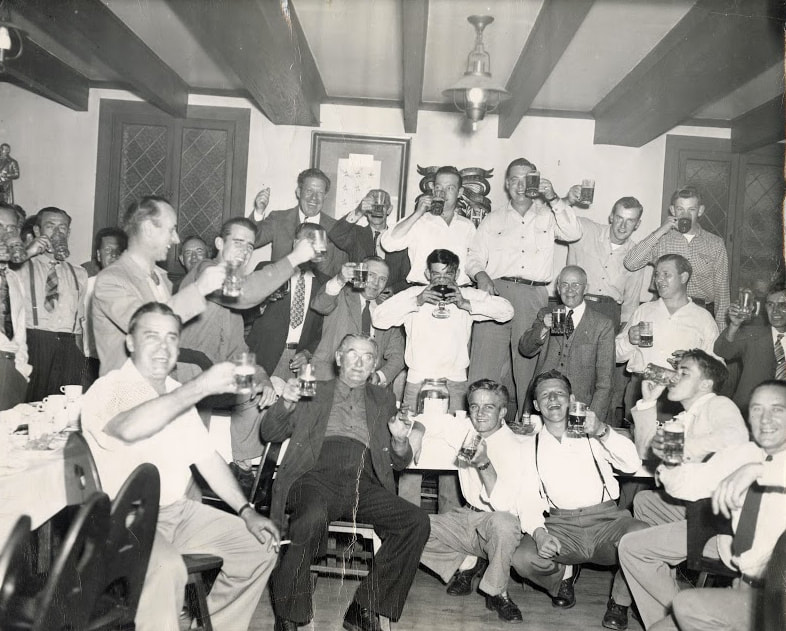CCHS Spotlights
SPOTlight on Burlington's German Club

Willkommen! Burlington’s German Club and Community, by Ellen MacLellan
Late in the nineteenth century, German immigrants began to arrive in Burlington and established a community along North Avenue within walking distance of Battery Park. “They traveled in steerage and were detained on Ellis Island…Vermont farmers often met the boats in New York to hire helpers for their farms. The landscape here reminded those who came from eastern and southern parts of Germany of their native land. They built houses and planted gardens. They had chickens, pigs, often a cow and a horse,” said Mrs. Alfred (Erna) Heininger, a German-born member of the community. Although they embraced their adopted country, they also longed to preserve their identity and customs—their language, celebrations, food traditions, and their love of music and intellectual discussions. Today only the German Club, re-named the Champlain Club, and the homes that they built on Crowley and surrounding streets serve as a reminder of this once vibrant neighborhood.
“[New England] was rather drab and somber for people who loved music and had dances on Sunday for the whole family in lovely garden restaurants, where coffee and cake, beer and wine was served under shady trees, back home,” said Erna Heininger. In 1891, fifteen charter members formed a mutual aid society known as the Goethe Lodge. In 1905, community members put their carpentry skills to work to build a club house at 20 Crowley Street. This became the Vermont Chapter Der Deutsche Orden der Harugari or the German Order of Harugari (D.O.H.), a national German-American mutual benefit and cultural association founded in New York City in 1894. Its motto was “Love, Friendship and Humanity.” The Club provided camaraderie and good German beer, stored in barrels in the basement, with a tap running upstairs to the bar. Many such gatherings took place in the Oak Room, distinguished by its oak beams, wainscoting, windows of diamond-pattern, leaded glass, and beautiful carvings created by a Bavarian member who lived in Montreal.
The Goethe Club hosted more formal events, as well, such as dinner dances, weddings, musical events, birthdays, masquerades and lectures. Christmas was a magical time for children and adults alike. Throughout December, there was singing, folk dancing, waltzes, and costume parties. The Club had a large tree lit with candles and on St. Nicholas Day each child received a gift. A Wurlitzer organ accompanied carolers who spilled into the streets to entertain the community.
“Germans are great for celebrating,” said Albert Kieslich in a 1983 Burlington Free Press article. His family operated Kieslich’s Market on North Avenue for 73 years. “There were always dinners with sauerkraut and German potato salad and ham. With a glass of beer, it made a good meal. We always had a jolly time.” “On a Saturday night, you couldn’t even find a place to sit,” added his cousin Russell Kieslich. “It was especially popular during prohibition of course. Germans came in from the country—Colchester—on weekends. There was a shed out back with six stalls for horses and buggies.” Sylvia Heininger Holden remembers the Colchester Lighthouse keeper traveling across the ice in winter to the Club, so great was its appeal.
As late as 1937, the Goethe Club was the center of German social life, and more than half of the German families in Burlington lived near it. These German settlers and their descendants enjoyed successful careers in industry, business, and the professions, and were generous philanthropists. But they left their most lasting mark on Burlington as builders. Families including the Haukes, Kieslichs, and Heiningers built such notable surviving structures as the former DeGoesbriand Hospital, the Maltex Building, the first building at the airport, and the grandstand at Centennial Field. The three families have been credited with building the neighborhood along North Avenue to Colchester, now known as the New North End, including the Ethan Allen Shopping Center.
The 1950s marked the beginning of the Club’s decline, as television became a popular source of entertainment. But as German-American membership dropped, the Club opened its doors to all in the early 1980s. These new members were drawn to the relaxed, family-friendly events at the Club, including picnics and barbecues that reminded them of their childhood neighborhoods.
“Melting pot” is an appropriate term for the fate of this ethnic neighborhood located in the city’s Old North End. The religious diversity and reputation of its inhabitants as hard workers contributed to their relatively easy assimilation, and they soon identified as American. English was spoken almost exclusively by the second generation. The neighborhood gradually disappeared as a distinct community of Germans. Yet the spirit of this industrious, caring, and joyful community of German immigrants continues in its reincarnation as the Champlain Club, a social club and popular neighborhood gathering place. With one of the few remaining wood-floor ballrooms in Burlington, the Club is often used for social dance events, honoring the German love of music and dance.
Sources
Feeney, Vincent E. Burlington: A History of the Queen City, 2015.
Green, Susan. “Goethe Lodge: New Life for an Old Club.” Burlington Free Press, April 17, 1983, Section D., pp. 1, 8.
Interview with Erna Heininger, Sara Holbrooke Oral History Project, 1984-1985.
Interview with Sylvia Heininger Holden, Ellen MacLellan, 2017.
Interview with Tom Barr, Gail Rosenberg and Elise Guyette, Burlington Edible History Tour, 2013.
All Images Courtesy Silver Special Collections, University of Vermont
Archived CCHS Programs on CCTV Channel 17
Did you miss a program or wish to see one again? Check out past CCHS programs on Channel 17.
- Check back later for more CCHS programs.
Did you miss a program or wish to see one again? Check out past CCHS programs on Channel 17.
- Check back later for more CCHS programs.
